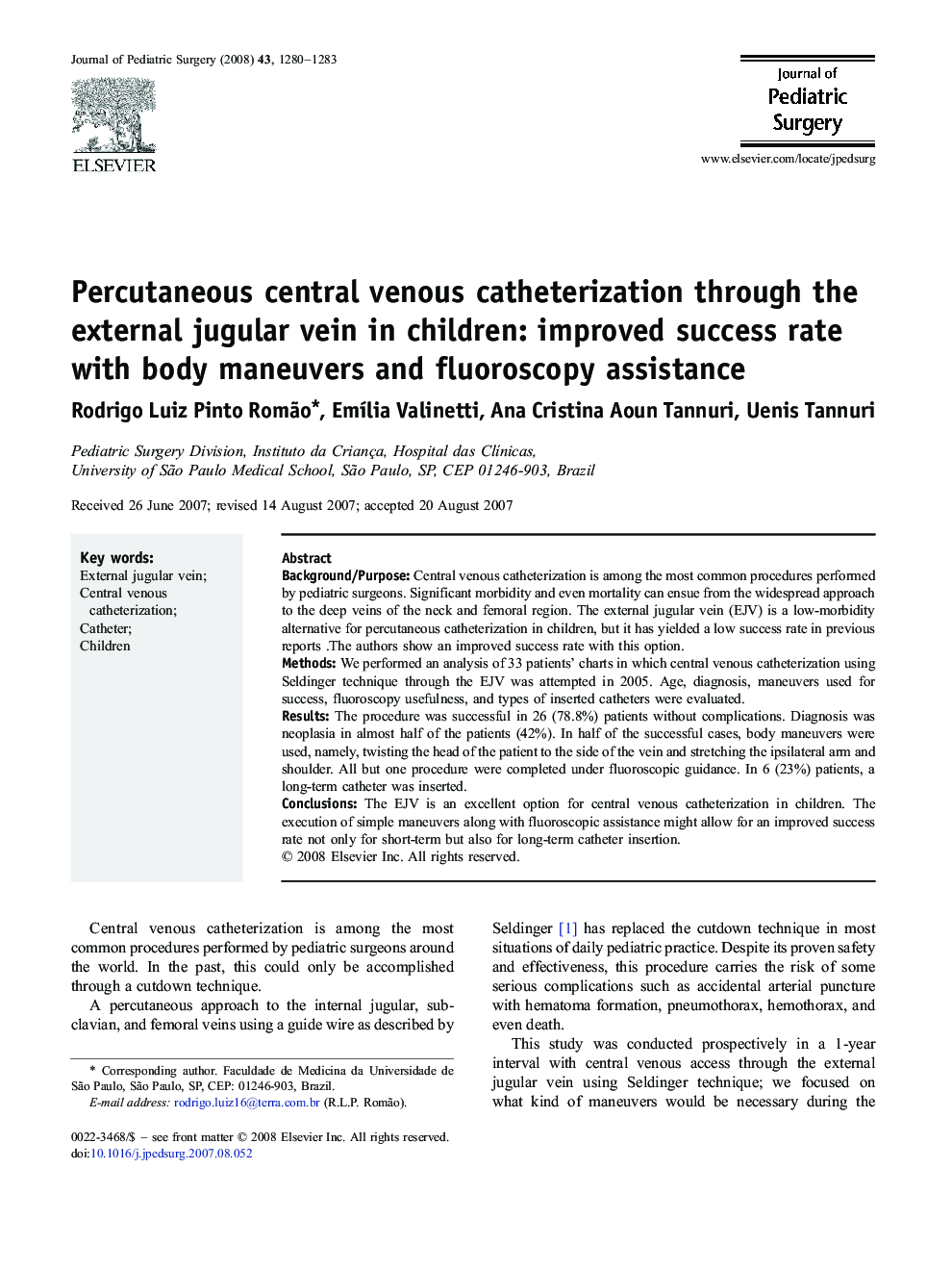| Article ID | Journal | Published Year | Pages | File Type |
|---|---|---|---|---|
| 4158873 | Journal of Pediatric Surgery | 2008 | 4 Pages |
Background/PurposeCentral venous catheterization is among the most common procedures performed by pediatric surgeons. Significant morbidity and even mortality can ensue from the widespread approach to the deep veins of the neck and femoral region. The external jugular vein (EJV) is a low-morbidity alternative for percutaneous catheterization in children, but it has yielded a low success rate in previous reports .The authors show an improved success rate with this option.MethodsWe performed an analysis of 33 patients' charts in which central venous catheterization using Seldinger technique through the EJV was attempted in 2005. Age, diagnosis, maneuvers used for success, fluoroscopy usefulness, and types of inserted catheters were evaluated.ResultsThe procedure was successful in 26 (78.8%) patients without complications. Diagnosis was neoplasia in almost half of the patients (42%). In half of the successful cases, body maneuvers were used, namely, twisting the head of the patient to the side of the vein and stretching the ipsilateral arm and shoulder. All but one procedure were completed under fluoroscopic guidance. In 6 (23%) patients, a long-term catheter was inserted.ConclusionsThe EJV is an excellent option for central venous catheterization in children. The execution of simple maneuvers along with fluoroscopic assistance might allow for an improved success rate not only for short-term but also for long-term catheter insertion.
